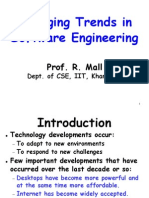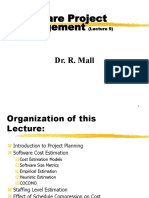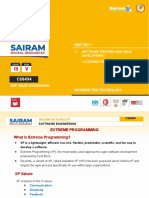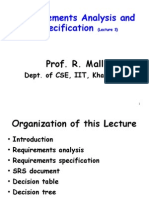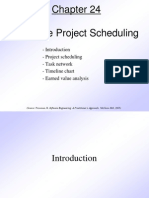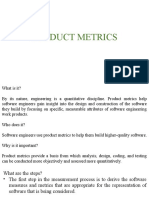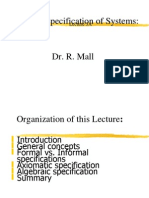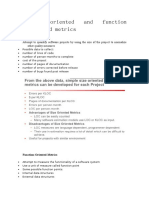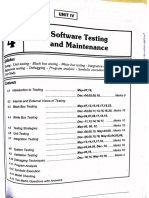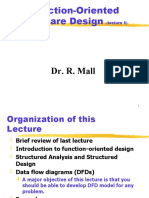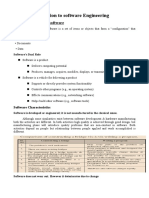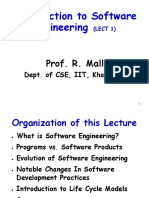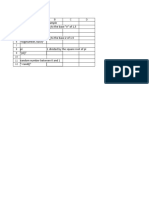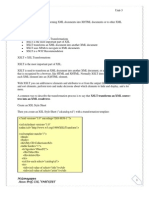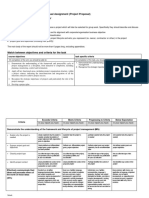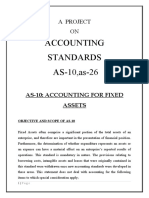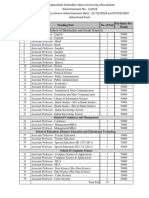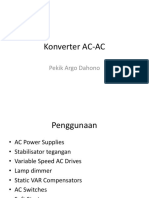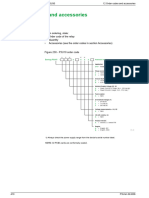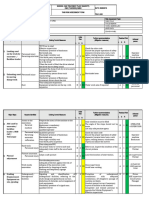Software Reliability
(Lecture 13)
Dr. R. Mall
�Organization of this Lecture:
Introduction. Reliability metrics Reliability growth modelling Statistical testing Summary
�Introduction
Reliability of a software product:
a concern for most users especially industry users. An important attribute determining the quality of the product.
Users not only want highly reliable products:
want quantitative estimation of reliability before making buying decision.
�Introduction
Accurate measurement of software reliability:
a very difficult problem Several factors contribute to making measurement of software reliability difficult.
�Major Problems in Reliability Measurements
Errors do not cause failures at the same frequency and severity.
The failure rate is observerdependent
measuring latent errors alone not enough
�Software Reliability: 2 Alternate Definitions Informally denotes a products trustworthiness or dependability. Probability of the product working correctly over a given period of time.
�Software Reliability
Intuitively:
It is also clear:
a software product having a large number of defects is unreliable. reliability of a system improves if the number of defects is reduced.
�Difficulties in Software Reliability Measurement (1)
No simple relationship between:
Removing errors from parts of software which are rarely used:
observed system reliability and the number of latent software defects. makes little difference to the perceived reliability.
�The 90-10 Rule
Experiments from analysis of behavior of a large number of programs:
The most used 10% instructions:
90% of the total execution time is spent in executing only 10% of the instructions in the program. called the core of the program.
Least used 90% statements:
Effect of 90-10 Rule on Software Reliability
called non-core are executed only during 10% of the total execution time. removing 60% defects from least used parts would lead to only about 3% improvement to product reliability.
It may not be very surprising then:
�Difficulty in Software Reliability Measurement
Reliability improvements from correction of a single error:
depends on whether the error belongs to the core or the noncore part of the program.
�Difficulty in Software Reliability Measurement (2) The perceived reliability depends to a large extent upon:
how the product is used, In technical terms on its operation profile.
�Effect of Operational Profile on Software Reliability Measurement
If we select input data:
only correctly implemented functions are executed,
none of the errors will be exposed perceived reliability of the product will be high.
�Effect of Operational Profile on Software Reliability Measurement
On the other hand, if we select the input data:
such that only functions containing errors are invoked, perceived reliability of the system will be low.
�Software Reliability
Different users use a software product in different ways.
defects which show up for one user,
may not show up for another.
Reliability of a software product:
clearly observer-dependent cannot be determined absolutely.
�Difficulty in Software Reliability Measurement (3)
Software reliability keeps changing through out the life of the product
Each time an error is detected and corrected
�Hardware vs. Software Reliability
Hardware failures:
Most hardware failures are due to component wear and tear:
inherently different from software failures.
some component no longer functions as specified.
�Hardware vs. Software Reliability
A logic gate can be stuck at 1 or 0,
To fix hardware faults:
or a resistor might short circuit.
replace or repair the failed part.
�Hardware vs. Software Reliability
Software faults are latent:
system will continue to fail:
unless changes are made to the software design and code.
�Hardware vs. Software Reliability
Because of the difference in effect of faults:
Though many metrics are appropriate for hardware reliability measurements
Are not good software reliability metrics
�Hardware vs. Software Reliability
When a hardware is repaired:
its reliability is maintained its reliability may increase or decrease.
When software is repaired:
�Hardware vs. Software Reliability
Goal of hardware reliability study :
Goal of software reliability study
stability (i.e. interfailure times remains constant)
reliability growth (i.e. interfailure times increases)
�Digression: The Bath Tub Curve
Failure Rate
Time
�Reliability Metrics
Different categories of software products have different reliability requirements:
level of reliability required for a software product should be specified in the SRS document.
�Reliability Metrics
A good reliability measure should be observer-independent,
so that different people can agree on the reliability.
�Rate of occurrence of failure (ROCOF):
ROCOF measures:
frequency of occurrence failures. observe the behavior of a software product in operation:
over a specified time interval calculate the total number of failures during the interval.
�Mean Time To Failure (MTTF)
Average time between two successive failures:
observed over a large number of failures.
�Mean Time To Failure (MTTF)
MTTF is not as appropriate for software as for hardware:
Hardware fails due to a components wear and tear When a software error is detected and repaired:
thus indicates how frequently the component fails the same error never appears.
�Mean Time To Failure (MTTF)
We can record failure data for n failures:
let these be t1, t2, , tn calculate (ti+1-ti) the average value is MTTF (ti+1-ti)/(n-1)
�Mean Time to Repair (MTTR)
Once failure occurs:
additional time is lost to fix faults measures average time it takes to fix faults.
MTTR:
�Mean Time Between Failures (MTBF)
We can combine MTTF and MTTR:
to get an availability metric: MTBF=MTTF+MTTR
MTBF of 100 hours would indicae
Once a failure occurs, the next failure is expected after 100 hours of clock time (not running time).
�Probability of Failure on Demand (POFOD)
Unlike other metrics
This metric does not explicitly involve time.
Measures the likelihood of the system failing:
when a service request is made. POFOD of 0.001 means:
1 out of 1000 service requests may result in a failure.
�Availability
Measures how likely the system shall
be available for use over a period of time:
considers the number of failures occurring during a time interval, also takes into account the repair time (down time) of a system.
�Availability
This metric is important for systems like:
telecommunication systems, operating systems, etc. which are supposed to be never down where repair and restart time are significant and loss of service during that time is important.
�Reliability metrics
All reliability metrics we discussed:
centered around the probability of system failures: take no account of the consequences of failures. severity of failures may be very different.
�Reliability metrics
Failures which are transient and whose consequences are not serious:
of little practical importance in the use of a software product. such failures can at best be minor irritants.
�Failure Classes
More severe types of failures:
may render the system totally unusable.
To accurately estimate reliability of a software product:
it is necessary to classify different types of failures.
�Failure Classes
Transient:
Permanent:
Transient failures occur only for certain inputs. Permanent failures occur for all input values. When recoverable failures occur:
Recoverable:
the system recovers with or without operator intervention.
�Failure Classes
Unrecoverable:
the system may have to be restarted. These failures just cause minor irritations,
Cosmetic:
do not lead to incorrect results. mouse button has to be clicked twice instead of once to invoke a GUI function.
An example of a cosmetic failure:
�Reliability Growth Modelling
A reliability growth model:
a model of how software reliability grows
as errors are detected and repaired.
A reliability growth model can be used to predict:
when (or if at all) a particular level of reliability is likely to be attained. i.e. how long to test the system?
�Reliability Growth Modelling
There are two main types of uncertainty:
in modelling reliability growth which render any reliability measurement inaccurate: our lack of knowledge about how the system will be used, i.e.
Type 1 uncertainty:
its operational profile
�Reliability Growth Modelling
Type 2 uncertainty:
reflects our lack of knowledge about the effect of fault removal. When we fix a fault
we are not sure if the corrections are complete and successful and no other faults are introduced we do not know how much will be the improvement to interfailure time.
Even if the faults are fixed properly
�Step Function Model
The simplest reliability growth model:
a step function model reliability increases by a constant amount each time an error is detected and repaired.
The basic assumption:
�Step Function Model
ROCOF
Time
�Step Function Model
Assumes:
all errors contribute equally to reliability growth highly unrealistic:
we already know that different errors contribute differently to reliability growth.
�Jelinski and Moranda Model
Realizes each time an error is repaired:
reliability does not increase by a constant amount.
Reliability improvement due to fixing of an error:
assumed to be proportional to the number of errors present in the system at that time.
�Jelinski and Moranda Model
Realistic for many applications,
still suffers from several shortcomings. Most probable failures (failure types which occur frequently):
discovered early during the testing process.
�Jelinski and Moranda Model
Repairing faults discovered early:
contribute maximum to the reliability growth.
Rate of reliability growth should be large initially:
slow down later on, contrary to assumption of the model
�Littlewood and Veralls Model
Allows for negative reliability growth:
when software repair introduces further errors. Models the fact that as errors are repaired:
average improvement in reliability per repair decreases.
�Littlewood and Veralls Model
Treats a corrected bugs contribution to reliability improvement:
Removes bugs with large contributions to reliability:
an independent random variable having Gamma distribution.
earlier than bugs with smaller contribution represents diminishing return as test continues.
�Reliability growth models
There are more complex reliability growth models,
more accurate approximations to the reliability growth. these models are out of scope of our discussion.
�Applicability of Reliability Growth Models
There is no universally applicable reliability growth model. Reliability growth is not independent of application.
�Applicability of Reliability Growth Models
Fit observed data to several growth models.
Take the one that best fits the data.
�Statistical Testing
A testing process:
the objective is to determine reliability rather than discover errors. uses data different from defect testing.
�Statistical Testing
Different users have different operational profile:
i.e. they use the system in different ways formally, operational profile:
probability distribution of input
�Operational profile: Example
An expert user might give advanced commands:
use command language interface, compose commands
A novice user might issue simple commands:
using iconic or menu-based interface.
�How to define operational profile?
Divide the input data into a number of input classes:
e.g. create, edit, print, file operations, etc.
Assign a probability value to each input class:
a probability for an input value from that class to be selected.
�Steps involved in Statistical testing (Step-I)
Determine the operational profile of the software:
This can be determined by analyzing the usage pattern.
�Step 2 in Statistical testing
Manually select or automatically generate a set of test data:
corresponding to the operational profile.
�Step 3 in Statistical testing
Apply test cases to the program:
record execution time between each failure it may not be appropriate to use raw execution time
�Step 4 in Statistical testing
After a statistically significant number of failures have been observed:
reliability can be computed.
�Statistical Testing
Relies on using large test data set. Assumes that only a small percentage of test inputs:
likely to cause system failure.
�Statistical Testing
It is straight forward to generate tests corresponding to the most common inputs:
but a statistically significant percentage of unlikely inputs should also be included. especially if test generators are used.
Creating these may be difficult:
�Advantages of Statistical Testing
Concentrate on testing parts of the system most likely to be used:
results in a system that the users find more reliable (than actually it is!).
�Advantages of Statistical Testing
Reliability predictions based on test results:
gives an accurate estimation of reliability (as perceived by the average user) compared to other types of measurements.
�Disadvantages of Statistical Testing
It is not easy to do statistical testing properly:
there is no simple or repeatable way to accurately define operational profiles.
Statistical uncertainty.
�Summary
Reliability of a software product:
essentially denotes its trustworthiness or dependability. probability of the product working correctly over a given period of time.
�Summary
Operational profile of a software
reflects how it will be used in practice. Consists of specification of:
classes of inputs probability of their occurrence.
�Summary
Statistical testing:
uses large data set selected based on operational profile. Provides more realistic reliability figures.


